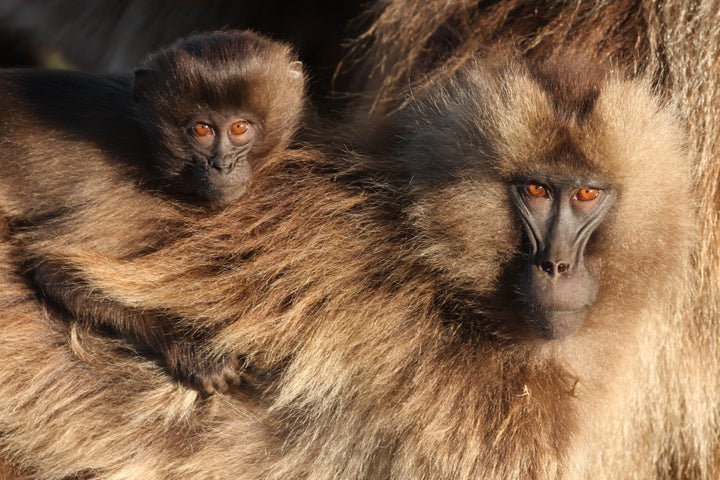
For pregnant women, miscarriage is a dreaded event. But if you happen to be a certain species of monkey, losing your baby may be the best alternative if a new guy shows up.
University of Michigan researchers spent five years observing wild gelada monkeys, a.k.a. gelada baboons, in Semien Mountains National Park in Ethiopia. Typically, the monkeys (Theropithecus gelada) live in small groups consisting of several related females and one dominant male. Every three years or so, the male is ousted by a rival who is seeking sex--or "reproductive access." And the researchers found that when new males did come along, eight out of 10 pregnant females had miscarriages.
This bizarre phenomenon - which has been dubbed the "Bruce effect" - is well known in captive rodents. But the new research, published online in the journal Science Express, marks the first time the Bruce effect has been observed on wild animals.
Why would a female gelada monkey do such a thing?
When a new male comes along, he's likely to kill babies that were fathered by other males. In fact, the researchers found that new males killed nearly 44 percent of the infants in the group within months of joining. Killing the babies in the group seems to boost a male's chances of reproducing, as females aren't fertile when their offspring are still young. Biologists believe that miscarriages enable females to cut their losses by not wasting energy caring for an infant that is unlikely to survive.
"The unweaned infants don't stand a chance against an adult male - even with their mother's protection," Jacinta Beehner, an assistant professor of psychology and anthropology at the university, said in a written statement. "[So] natural selection should favor females that retain the ability to lose their pregnancies prior to a hefty investment in gestation and lactation."
But researchers are still scratching their heads over the physiology that underlies the Bruce effect.
"The million-dollar question, of course, is how do these females miscarry?" Beehner said. "Are their bodies responding to a social cue? A chemical one? A combination of the two?"
Click through to see photos of the gelada monkeys from the study, and the research team who observed them.

